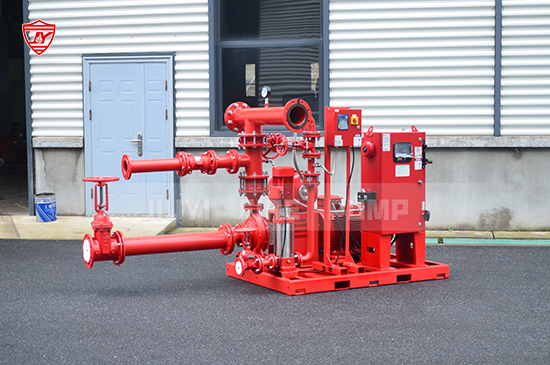A fire pump system is a crucial component of any fire protection system, ensuring adequate water pressure in case of an emergency. However, improper shutdown of a fire pump can lead to operational failures, damage to components, or even safety hazards. In this guide, we will walk you through the proper steps to safely shut down a fire pump system while maintaining compliance with NFPA 20 standards.

A fire pump should only be shut down under specific circumstances, such as:
1. Notify Relevant Personnel
Before shutting down a fire pump, inform all responsible personnel, including facility managers and fire safety officers, to ensure coordinated action.
2. Confirm No Active Fire Emergency
Ensure that there is no active fire emergency or pending fire alarm signals before proceeding with the shutdown.
3. Stop the Pump Gradually
For electric fire pumps, switch off the controller and monitor for a smooth stop.
For diesel engine fire pumps, reduce the throttle slowly before shutting off the fuel supply to prevent sudden pressure drops.
4. Close the Suction and Discharge Valves
Gradually close the suction and discharge valves to avoid water hammer effects that could damage the system.
5. Drain the Pump and Piping (If Necessary)
If shutting down for extended periods, drain the system to prevent freezing or corrosion buildup.
6. Lock Out/Tag Out (LOTO) the System
Use proper Lockout/Tagout (LOTO) procedures to ensure the pump is not restarted accidentally during maintenance.
7. Perform a Post-Shutdown Inspection
Check for leaks, pressure changes, or mechanical wear to address any potential issues before the next startup.
A properly executed fire pump shutdown ensures system longevity, reduces the risk of damage, and maintains fire safety compliance. Following these steps will help keep your fire pump system in optimal condition for emergencies.